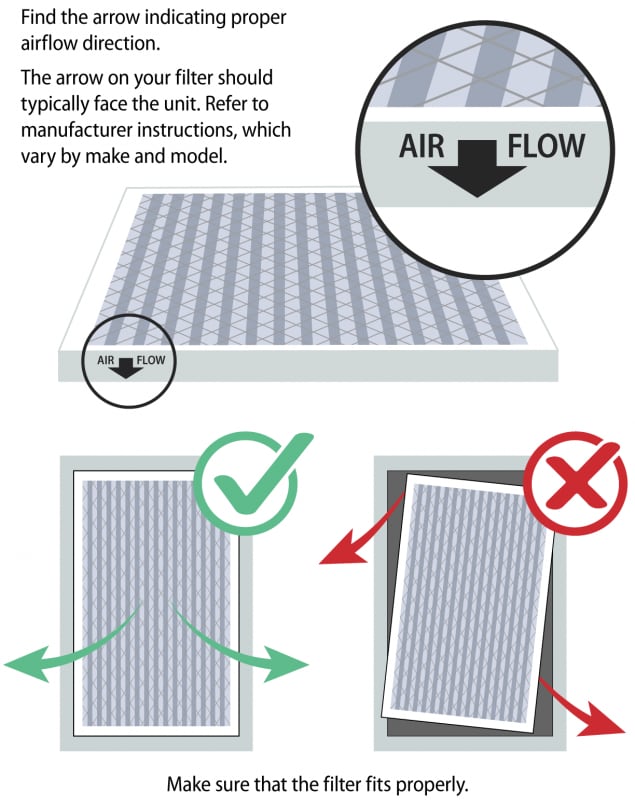How Home Ventilation Melbourne Helps Prevent Mold and Dampness
Recognizing the Relevance of Home Ventilation for a Healthier Living Atmosphere
Home ventilation plays a necessary duty in keeping a healthy and balanced living atmosphere. It promotes the exchange of interior and outdoor air, which is necessary for improving air high quality. Without appropriate ventilation, homes can come to be breeding grounds for contaminants and allergens. The repercussions of insufficient air circulation can be substantial. This brings up the inquiry of how home owners can effectively apply ventilation techniques to protect their health and health. Comprehending these techniques is critical.

The Fundamentals of Home Air Flow
Home air flow functions as a crucial part of interior air high quality and convenience. It includes the process of exchanging stale indoor air with fresh outdoor air, thus minimizing moisture and controlling temperature level. Proper ventilation systems can consist of natural techniques, such as open windows and vents, as well as mechanical systems, such as exhaust fans and air exchangers. Efficient home ventilation assists protect against concerns like indoor mold and mildew development and the accumulation of harmful particles. It additionally improves general energy efficiency, as well-ventilated rooms can preserve comfortable temperatures with much less dependence on heating and cooling systems. Understanding the basics of home air flow is important for home owners seeking to produce a healthier living atmosphere on their own and their households.

Typical Resources of Indoor Air Pollution

Although lots of may not understand it, interior air contamination can stem from various resources within a house. Usual factors include unstable natural compounds (VOCs) produced from paints, solvents, and cleansing products. Home appliances, such as gas stoves and fire places, can release hazardous gases like carbon monoxide and nitrogen dioxide. Additionally, mold and mildew and mildew grow in moist areas, launching spores that impact air quality. Pet dander, dirt termites, and pollen can gather inside, more exacerbating air pollution degrees. Cigarette smoking inside creates poisonous chemicals that linger airborne. Building products, including asbestos and formaldehyde, can off-gas harmful materials. Recognizing these resources is essential for keeping a much healthier interior atmosphere and advertising efficient air flow methods.
Health Results of Poor Ventilation
Indoor air contamination can have substantial health and wellness ramifications, particularly when air flow is poor. Poor ventilation can lead to the accumulation of hazardous pollutants, such as volatile natural compounds, mold, and particulate matter. This buildup might cause respiratory concerns, including asthma, allergic reactions, and persistent obstructive pulmonary condition. People might experience signs and symptoms like frustrations, tiredness, and irritation of the eyes, nose, and throat. Prone populations, such as children and the elderly, are at higher risk for serious health and wellness impacts. Long-lasting exposure to improperly aerated environments can likewise add to much more significant conditions, consisting of heart diseases. As a result, ensuring proper air flow is crucial for keeping a healthy living atmosphere and reducing the threat of wellness issues connected with indoor air pollution.
Effective Air Flow Strategies for Your Home
Appropriate ventilation is important for maintaining a healthy interior atmosphere, and implementing effective approaches can significantly boost air quality. Property owners can start by guaranteeing that exhaust fans are installed in kitchens and bathrooms to eliminate excess wetness and smells. Opening up windows frequently enables fresh air to flow, especially throughout moderate climate. In addition, utilizing air purifiers with HEPA filters can aid capture airborne contaminants. For homes with home heating and cooling down systems, keeping cooling and heating systems and altering filters consistently is crucial for peak performance. Including natural ventilation methods, such as cross-ventilation, can additionally enhance air flow. Securing any leakages in doors and home windows avoids undesirable drafts, which can interfere with regulated airflow, inevitably leading to improved indoor air high quality and convenience.
Keeping Ideal Air High Quality Year-Round
To keep ideal air high quality year-round, homeowners need to adopt an aggressive approach to managing their interior environment. Consistently monitoring indoor air quality is essential; this consists of checking for contaminants webpage such as dirt, mold and mildew, and unstable organic substances (VOCs) Executing efficient air flow systems, such as exhaust followers and air cleansers, can significantly minimize air-borne impurities. In addition, regular maintenance of a/c systems assurances peak performance and air circulation. Property owners need to additionally consider humidity levels, as extreme dampness can result in mold and mildew development. Seasonal modifications may require adjustments in air flow methods to accommodate differing outside air high quality. By prioritizing these practices, homeowners can create a healthier living area, promoting total health for all occupants throughout the year.
Frequently Asked Inquiries
How Can I Tell if My Home Needs Better Air Flow?
To identify if a home needs much better air flow, one must observe indications such as persistent humidity, mold growth, musty odors, condensation on windows, or enhanced allergy signs, indicating inadequate air flow and potentially bad interior air top quality.
What Are the Signs of Poor Indoor Air Quality?

Can Houseplants Improve Indoor Air Quality Properly?
The efficiency of houseplants in improving interior air quality is debated. While some studies recommend they can absorb contaminants and produce oxygen, their general impact might be minimal contrasted to appropriate ventilation and air purification systems.
Exactly how Commonly Should I Modification My Air Filters?
The frequency of air filter adjustments usually relies on usage and filter kind. Generally, it is suggested to change filters every three months, though houses with allergic reactions or family pets might need more frequent adjustments for ideal performance.
Are There Any Type Of Specific Ventilation Solutions for Allergy Sufferers?
Many air flow systems, such as HEPA-filtered systems, effectively decrease allergens airborne. Home Ventilation Melbourne. These systems trap dirt, family pet, and plant pollen try this dander, offering allergy patients with a cleaner, healthier indoor setting while managing air high quality successfully
It assists in the exchange of outside and indoor air, which is essential for improving air quality. Home ventilation offers as a crucial component of indoor air quality and comfort. It includes the procedure of exchanging stagnant interior air with fresh outside air, consequently lowering humidity and controlling temperature. Interior air contamination can have substantial health and wellness effects, specifically when ventilation is poor. Correct ventilation is important for preserving a healthy and balanced indoor atmosphere, and applying effective strategies can substantially boost air top quality.